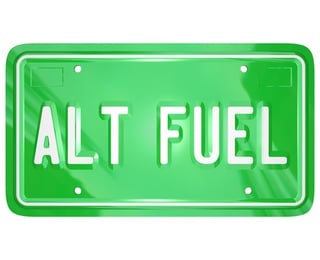School Bus Fleet Management: Pros and Cons of Alt-Fuels
published on September 08, 2017 by Sonia Mastros
 Alternative fuels such as propane or compressed natural gas (CNG) are a hot topic within the transportation industry, including those involved in school bus fleet management. Everyone knows we have a limited supply of petroleum on the planet and that regular and diesel gasoline are harmful to the environment.
Alternative fuels such as propane or compressed natural gas (CNG) are a hot topic within the transportation industry, including those involved in school bus fleet management. Everyone knows we have a limited supply of petroleum on the planet and that regular and diesel gasoline are harmful to the environment.
But when schools are often facing major budgetary crises, is a major school bus upgrade really the best option even when it brings long-term benefits?
There's no single easy answer to this, and undoubtedly the issue will be debated heavily among school bus fleet management for years to come.
One option for saving fuel for your buses is through optimizing your school bus routes with BusBoss.
In the meantime, we want to take a quick look at the major pros and cons of a move to alt-fuels in school bus fleets.
The Benefits of a Move to Alt-Fuel
1. Lower long-term fuel costs.
Prices vary by region, but in virtually all cases there will be at least one alt-fuel available which is substantially less expensive than gasoline - particularly on a per-mile basis. On a long enough timeline, it could pay off.
2. Lower maintenance costs.
Alt-fuels burn more cleanly than gasoline, which means less wear, tear, and grimy buildup on the engine and parts, leading to long-term savings.
3. Eco-friendliness.
More people across the country are becoming concerned about the impact humanity is having on the environment. Depending on the costs, this would undoubtedly be a very popular move among most students and parents.
4. Potential state assistance.
Many states are offering assistance packages (some quite substantial) for organizations who move away from petroleum. But this, of course, varies considerably on a state-by-state basis and would have to be carefully researched.
The Drawbacks of a Move to Alt-Fuel
1. Huge upfront costs.
Whether converting existing buses or purchasing new ones, a move to alt-fuels would be extremely costly no matter how many state incentives are in place. For many, this is a dealbreaker all by itself.
2. Many options. Maybe too many.
Electric? Natural gas? Propane? Ethanol? Hydrogen? There are a lot of competing alt-fuels, and there's no good way of guessing who the market leaders will be. Which is a particularly big problem because...
3. Fueling stations are spotty and non-standardized.
The Department of Energy maintains a map of all known alt-fuel stations in the US. There are huge coverage gaps for any particular fuel, particularly in the Midwest. One potential solution is to bulk-source your fuel and install your own pumps, which would be another long-term cost saver but lead to even higher up-front costs.
To learn more about the technology that school districts like yours are using to ensure fuel management and reduce carbon emissions, contact the transportation professionals at BusBoss. We offer a wide selection of technological options that will keep students safe while optimizing the performance of your school bus fleet.
What Do You Think?
It's a tough issue. Is your district considering a move towards alt-fuels? Have you run any buses on them? What are your thoughts?



